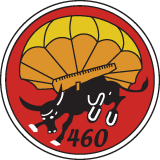
James E Mortensen
|
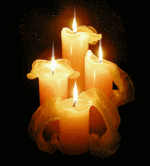
IN MEMORIAM |
|
It's with great sadness that I must inform you
of the death of James Mortensend. He passed away at the Bailey Center January
30, 2012. We should never forget that this man has done for us. Thank you my friend
for all and rest in peace. God Bless you! |
Many thanks you to James Mortensen for answering to my questions and for giving
me access to his history Thank you James !
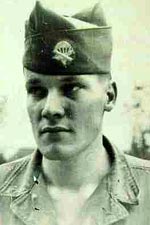
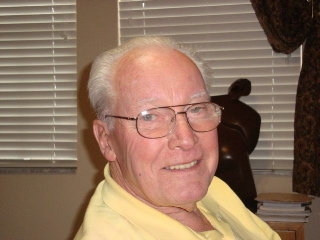
James E
Mortensen was born on March 15, 1925 in a farm in Brayton, Iowa. His father,
Axel C Mortensen used to work in the mail transportation by rail and all his
life through. Her mother, Mabel was a housewife, raising her 3 children, Jim was
the second one.
The family moved 3
weeks later to Chicago.
They
lived in the city for 5 years.
“At this
point, we were living in an apartment in Chicago, somewhere on the north side.”
In 1930
the family moved again to settle down in Cheyenne, Wyoming.
“They
even built a new house in 1931, just as the depression settled upon us, and it
served as the family headquarters until 1985.”
Jim had a
happy childhood. He was sharing his time between school and also at 12 years old
and so for 3 years, he joined the American Legion Drum and Bugle Corps where he
played the trumpet. His other favourite hobby was the radio. In the early '40s,
after an exam in Denver, he got a license as a radio presenter. He was almost 17
years old when he replaced the speaker of the local radio, KFBC, who left for
war. Jim was presenting the late night session, where he specially read the war
reports.
This
activity ended when he joined the army.
“I joined
the army in April 1943 immediately out of school when I was just 18 years old.”
James
Mortensen has immediately volunteered for the paratroopers.
“I
volunteered for the paratroops because it was "different," new, dangerous and
exciting.
I was
just 18 and ready for an adventure.”
After a
stay at Fort Logan, Jim was sent to Camp Toccoa, Georgia, close to Camp Mackall,
North Carolina just before Fort Bragg. Then it was the jump school at Fort
Benning. There, he did the 5 jumps and became a paratrooper.
“Benning,
lovingly called the Frying Pan, was appropriately named for those who arrived
there in the summer of 1943. Scorching heat didn't slow down the process,
though. Everything continued as before. More training towers at first, and then
the big drop from the 250-foot tower. Real chutes were used with cable guides to
assure our orderly approach to the ground. This was serious and getting us
closer and closer to the first jump.”
Then, the
next step was learning to pack his own parachute.
“Everybody paid very close attention to these instructors. NO exceptions, for we
soon had to pack our own chute for each of the five jumps scheduled for the next
week.”
Then came
the day of the first jump. Feeling anxious, Jim and his 20 other classmates
climbed on their C-47. After the famous "Standing - Hook ' the men have checked
the equipment of the man in front of themselves and were counted. Jim was the
4th or 5th of this stick. Then came the green light and the time to jump.
“My God,
there was no time to even worry about what to do or how to feel. Grab the door,
step out, turn left and duck! And it happened just as it had so many times from
the training tower. The chute opened with a bang, thanks to the prop blast, but
it delivered a painful jerk. But there I was drifting down toward the ground. No
time for dreaming! Within seconds, my boots hit the ground and I rolled to
lessen the shock, perhaps not quite as perfectly as we had done in training.
Now, get out of the chute, roll it up and run, yes, run to the truck at the end
of the drop zone, as if in some kind of a contest. And then go back to the
packing shed to redo the chute for the next day. While running to the truck, I
suddenly realized what had happened. It was over! I did it!
I was a
trooper!”
After the
5 jumps, he was qualified as a paratrooper, received his wings, had the right to
proudly display the patch of paratroopers and to bilk the bottom of his
trousers.
“My
certificate of completion of both the Parachute Packing and Voluntary Jumping
requirements, I was appointed a QUALIIFIED PARACHUTIST on September 18, 1943.
The certificate, still in my possession, carried the signature of Colonel James
B. Anderson, Commanding.”
Jim was
sent to the artillery regiment, the 460th Parachute Field Artillery Battalion.
He will be himself attached to the 517th PIR which, with the 596th Airborne
Engineer Company was part of the 517th Regimental Combat Team (RCT)
At the beginning of May 44, the 517th RCT stationed at Camp Patrick Henry near
Newport and embarked aboard the USS Cristobal. After 14 days of travel over the
Atlantic Ocean and the Mediterranean Sea, they arrived at the port of Naples in
Italy.
The trip
was ok.
“One
serious submarine threat occurred as we approached Gibraltar, but the destroyer
screen comforted us. A few days before Gibraltar the engineers had to stop the
engines. No other vessel was allowed to share our fate. All proceeded apace.
Within moments we were well behind the convoy and were surrounded by a silence
broken only by the sound of the modest waves breaking against the hull of the
ship. After drifting for an hour or so we finally lost sight of the convoy, but
then heard and felt the welcome pulse of the engines.”
Finally,
the ship docked in Naples. The unit bivouacked in the crater of Mount Vesuvius.
On June 14th, the unit embarked aboard the LCT towards Anzio beaches.
They landed near Civitavecchia. The men put guns in the battery and opened fire.
“Oh, we
fired a lot of rounds and took a fair amount of fire, but we were too far from
the target of our rounds to give us a sense of direct participation. At this
point, it became clear to me that I needed a change in direction as far as my
military career was concerned. Combat experience convincingly demonstrated to me
that being a plotter at an entrenched gun battery is not quite the same as being
at the other end of the chain, at the scene, at the spot where the targets were
identified and directions given to the battery by phone or radio.”
As he
could not join the infantry, Jim became an observer for his artillery unit.
In early July, the unit was removed from the front and was sent to rest in
Frascati. Jim spent this time between Rome and the base camp to heal his injured
leg.
On August 14, trucks came for the men to drive them to the airfield where they
would take off for jumping over South of France.
"There
was a long wait, during which we could not loosen or untie any of the parachute
straps or remove any of the equipment. All we could do was sit on the runway
near the plane."
Then,
after hearing the last words of the commander, the men were hauled up into the
aircraft. The engines set off and the heavily laden aircraft took the air. At
that time, James Mortensen was exactly where he wanted to be : right into the
heart of the action.
The jump went very well, James jumped just after the container material, it was
around 0435 a.m., on August 15, 1944. The men were pretty spread out, but with
the morning coming, the situation became clearer and then the men realized they
were surrounded by vineyards.
“The
search for equipment gathered more fruit and by 0700 we were moving into
position. Our observation post was on the first hill rising out of the valley
and the process of clearing the way for the ground troops was off and running.
Directing fire was difficult because we had no knowledge of the location of our
guns.”
From his
observation position, James Mortensen saw the landing of the gliders in the
afternoon.
“Oh, I'm
so glad I jumped instead of arriving by glider!”
Later on,
he also attended the second wave of jumps which he found pretty impressive.
Then most of the unit was round up, they moved to Frejus to perform their
mission. Then it was the Maritime Alps, where the men had to push and to pull
the parts.
“There
were a few conscripted mules that helped with the heavy howitzer pieces and big
mortar base plates.”
Arriving
at the Col de Braus, the PC observation was put in a cave. James Mortensen spent
two weeks observing Sospel and the surrounding valley.
“Duty in
the cairn required a lot of fire direction as German traffic moved back and
forth across the valley and up over the next mountain on the road to Italy.”
Jim was
also observing a buried bunker which he took for a constant target. The Germans
replied with their artillery.
“Suddenly
this war became very personal, between me and that damned fortified mountain
across the saddle-shaped ridge. The mortar fire became a daily ritual and their
aim continued to improve.”
It was
during one of this exchange that Jim was nearly killed by a burst of 60mm
mortar. But it was his binoculars which were hit. Then, the Germans left Sospel.
The unit of Jim was replaced and was sent to rest near Cannes on Cote d'Azur.
After some few days off, the unit was sent to Soissons, where they arrived on
December 15. At that time the Germans launched their offensive.
The unit of James Mortensen was assigned to the 82nd Airborne Division. On 22
December the 460th NTFPs fired shells to support the 30th Infantry Division. The
weather was awful, a mix of snow and ice during this period.
“There is
no describing the fatigue, the cold or the numbness. We became robots, moving
out at night, ready for the next day's attack, looking for the weak spot in the
German lines that would allow us to cut a vital cord, chewing on the frozen
cheese or Spam from the K-ration used that day.”
After
about a week, James Mortensen joined the headquarters of the 7th Armored
Division for a meeting. The meeting having finished late, he was unable to
rejoin his unit. He remained in the attic of the farm used for the headquarters
when suddenly hell went totally wild. A shell fell on the farm, across the
attic, then across the farm to explode behind the farm killing 8 soldiers of the
7th. As James could see where the German shots started firing, he rushed to
direct the cannon fire right to the target. But on radio, he was told it was
impossible, that there were other priority targets.
“And then
it dawned on me.
The
battery didn't have any ammunition. They were at the minimum level and simply
couldn't fire any more. And, of course, they couldn't tell us the facts over the
radio.
The
rumors were true!”
The
weather and so the German attack had reduced the supply dangerously low!
Fortunately, the famous Red Ball Express changed the situation within 48 hours.
The unit of James Mortensen moved to the village of Bergstein, Germany.
“It was a
hazardous location. There had been a terrible tank battle here and there were
carcasses everywhere.”
“I
was promoted to Sergeant in January or February 1945. I found out about it at
Bergstein, Germany, as I recall.”
Durant cette
période, dans la nuit du 7 février, James fut blessé au bras.
At that
time, on the night of February 7, James was wounded in the arm.
“The
grenades came over my left shoulder and hit the ground in front of me. Most of
the blast went away from me, but there was enough going my way to take a few
nicks in my arm.”
After
several weeks, the unit of James was replaced and sent off to rest. After two
months, the men were finally able to eat hot, to take a hot shower and to sleep
in a proper bed.
At that time, James Mortensen had the chance to get a permission for Paris with
6 other members of the battalion.
“We had a
wonderful two days of sightseeing, eating and sleeping. We said hello to
Napoleon, looked at lots of art, The program for “Samson et Dalila”, the opera,
informs us that Suzanne Lefort played Dalila and Jose Luccioni sang the Samson
role. It was a pleasant evening. At the end, life seemed almost normal again.”
But once
back to his unit, James Mortensen became seriously sick. At the point of being
sent to a hospital in the Air Force in St Quentin.
“My first
concern, and theirs, was that the fever came from an infection in a wound or
from one of the assorted bumps accumulated during the Bulge.”
The
doctor diagnosed a general tiredness due to long fights. James fought 60 days
with little or no food, no heat and some very little sleep. He began another
week of rest. And then a second week. When it came to the end, the doctor told
him that the source of the problem was his tonsils.
The day they were taken away James nearly died in his sleep of a bleeding.
“I was
about to drown in my own blood because the stitches broke loose during the climb
up the four flights of stairs!”
Fortunately, a nurse woke him and the doctor rushed to stop the bleeding.
At the end of the 3rd week, the state of Jim improved. All the paratroopers were
recalled to their base. On site, Jim equipped himself for the mission. But it
was cancelled. And he was sent back to the hospital.
Several days later he was again struck by a fever. An infection had followed the
operation.
Finally, some time later, the paratroopers were all recalled. A jump over the
Rhine. Jim and his stick were in the aircraft, the engines started roaring.
But the plane did not move.
“Five
minutes passed by, perhaps ten or fifteen before we realized that something was
amiss. Necks craned out the always-open door of the plane. A jeep was seen
racing toward the lead plane. Then, without a word from the crew, the engines
shut down. The pilots knew. No radio silence was required, for the Remagen
bridge across the Rhine was ours and news that the 82nd Airborne was not going
to jump across the river was suddenly about as interesting and as secret as
yesterday's newspaper.”
James was
sent back to the hospital again. This time he received treatment which had its
effect. Meanwhile, the war ended in Europe. James Mortensen eagerly awaited his
return in the 517th RCT.
Unfortunately for him, the fact he was not in his unit for a long time, James
could be sent to whatever unit. Anyway, his unit could be miles away from him!
He was sent to a "cell" with other veterans.
“Most of
the guys there weren't worth knowing. But after surveying the crowd, I met one
officer that seemed to know his way around and seemed interested in my case. Or,
I should say, in our case, because by now there were three of us from the 517th
and all had the same intense desire to get back home.”
Fortunately for James, he would meet this officer several times a week, he was a
doctor and he was supposed to look after the right temperature. Fortunately too,
the doctor was a friend of the commandant of the base. After 3 or 4 weeks which
seemed an eternity for James, he could join his buddies in Nancy, France. The
unit was preparing to leave to occupy Berlin. His unit had changed. Many of his
comrades had enough points to go home. Others were transferred to go fighting in
Japan.
As there was no need for an observer on the front, the Sergeants became Sergeant
Major, office manager of the battalion. Jim was sent to the headquarters of the
82nd Airborne.
The first task that Jim Mortensen did at his new assignment was to prepare the
movement of the unit to Berlin.
But this
work did not please Jim that much.
“I wanted
nothing to do with the job or the barracks or the parade ground, or the white
gloves and scarves. I wanted out in the worst way. But I had absolutely no idea
how it might happen.”
The
solution came to him in an advertisement in the newspaper published by the
headquarters of U.S. forces. He was looking for advertisers for the AFN
(American Forces Network) radio the American radio of occupation. With his
experience as a radio host, James was completely involved, he left the 82nd for
AFN Berlin.
James Mortensen was living outside Berlin, in a large modern mansion, belonging
to Max Schmelling, the German boxer and paratrooper. It was a great change for
him in comparison with the life in the barracks.
James had a private room, furnished with his own bathroom and every day there
was a feast.
“This
surely was a dream. Here I was, a 20 year-old buck sergeant, just out of the
mud, snow and misery of a war, a guy whose finishing school was paratrooper
training in the sand hills of North Carolina, a product of the worst depression
in history, an unsophisticated kid who didn't know which spoon to pick up first
or last, living, all of a sudden, as a member of some royal family.”
The AFN
was proposing a program of popular music and classical. A broadcast sports and
news. James participated in the program about the football championship of the
army who fought in the famous Olympic Stadium in Berlin. He also told the radio
the story of the 82nd Airborne Division.
At lunch, he met some important people in the radio area like the President of
CBS or NBC Red and NBC Blue network.
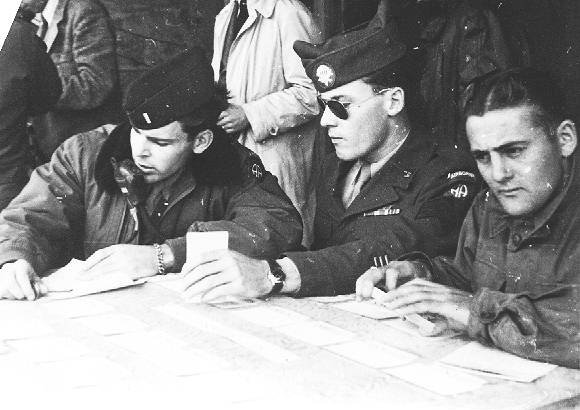
Photo taken during a memorable day. Vince Joyce (to the
left) and
James Mortensen (center) from the broadcast
Olympic Stadium in Berlin a soccer's game championship. Berlin - 1945
He liked the job, but even if the Network AFN offered nice wages with a status
as a civilian rather than military, James Mortensen was homesick and then a
letter from his mother dated from November 7, 1945 asking him to return let him
decide to get back home. After travelling through Paris, Jim arrived at Le Havre
to embark on December 3, 1945. He landed somewhere in New Jersey. Then direction
Fort Dix and before the end of the day, he was sure he would be home before
Christmas. On 21 December he was sent to Fort Logan, and after refusing to sign
as a reservist, he was released from his military obligations.
“I
arrived back in Cheyenne as an ex-GI on December 22, 1945.”
Two weeks
after his return, he registered at Denver University. A few weeks later, he met
Genevieve, whom he married on November 8, 1946. In 1947, they had one son,
Arthur.
After several jobs, he joined a division of Cargill which was a company
producing pet food, a huge company in Minneapolis.
Moved to : Minneapolis - Kansas City - Minneapolis.
“But, by
1956 it was apparent that I must move on so, after a brief stay in Battle Creek,
MI, we landed in the one place I swore I would never call home, New York!”
After 25
years, he left to go to work in San Francisco in 1962 for a year before
returning to New York. In 1957, he joined an advertising agency, the Company
Young & Rubicam New York. In 1981 he retired as the Vice President of the
Company.
He bought a motor home and visited the other 48 states of the United States.
“In 1990
we moved our home base to Florida and the Sunshine State is very much home now.
And the pool in the rear of the house is a favorite morning view!”
Unfortunately, his wife Gen died in 2003 after 57 years of marriage, Jim was
alone.
But Jim
would find someone else.
“I
married Brenda in September 2007 in Brooklyn, NY. We were introduced by mutual
friends.”
De la guerre, Jim Mortensen est revenus avec le petit drapeau étoilé qu’il avait
à l’épaule, la carte en soie de la France qu’il offrit à un jeune étudiant en
histoire.
From the
war, Jim Mortensen has been back with the little starry flag he had on the
shoulder, the silk map of France that he gave to a young history student.
“But, the
purple heart and bronze star medals and paper work are still in my possession.”
Since the
end of the war, Jim came back to Europe several times for his work. He returned
to Bergstein and also in the South of France.
“I tried
in vain to find my jump location in Southern France.
Never
succeeded!”
Jim
Mortensen is still very active in the group of former 517th PRCT. The last
meeting which he attended was a few weeks ago, held at the beginning of January
2009 in Kissimmee.
“I was
reminded during the reunion that we never really forget the trials of WWII. We
talked about many of them and it was as though they happened yesterday. Nothing
that took place has an impact on my current life, at least as far as I can
tell.”




